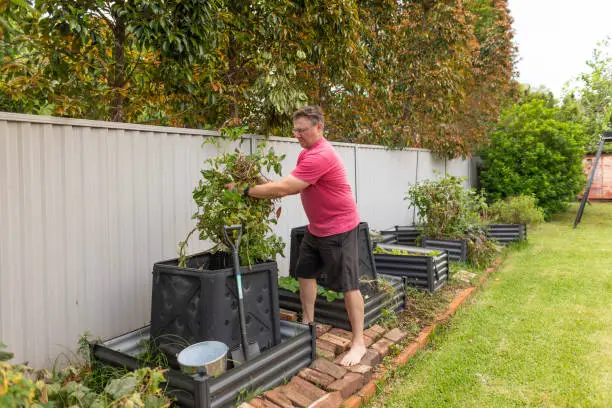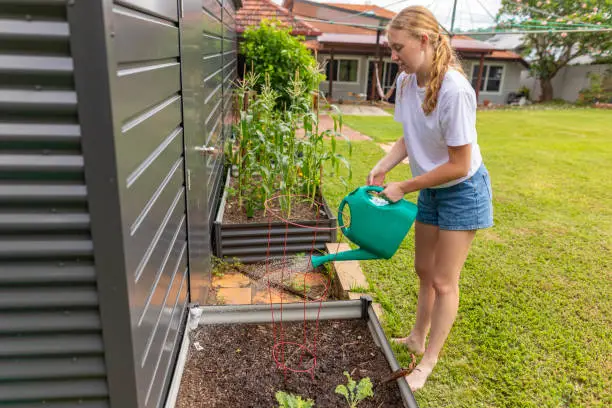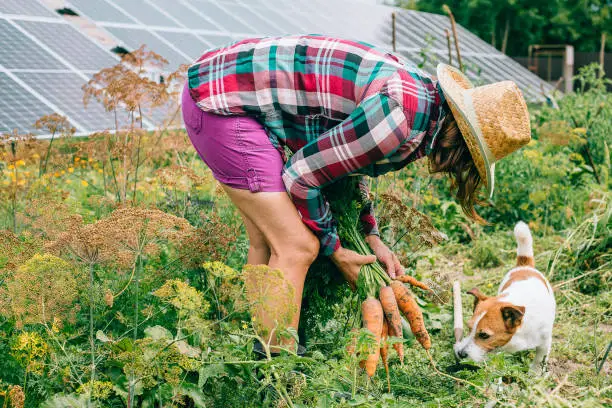Growing Vegetables: A Backyard Homesteading Journey
A backyard homesteading experience changes your garden and lifestyle, connecting you to nature. Growing veggies from seed to harvest takes patience, tenacity, and hard work. Growing your plants and yourself requires getting your hands filthy, literally and metaphorically.

The first step in this lush journey is selecting the right seeds. Although commonplace, this selection process is vital. Heirloom plants bring history and character to your garden. Generational seeds are more durable and adaptable to local climates. And they tell a tale, linking you to past gardeners.
After choosing, planting is the enjoyable part. Be careful not to spread seeds randomly. Your garden is a canvas, and space planning is art. As old as agriculture, companion planting pairs plants for mutual benefit. Basil guards tomatoes and marigolds to fight worms and other garden pests. This strategy maximizes space and promotes a backyard environment.
The germination process is silent. The plant kingdom’s excellent method turns tiny seeds into sprouts. This stage takes time and faith. Maintain soil moisture and temperature. Seeing the first green shoots is thrilling. It shows life, promises future crops, and proves your efforts.
Maintenance follows seedling growth toward the light. This phase involves watering, weeding, and pest control. Ensuring your plants get enough water without drowning or drying them is tricky. Mulching does wonders to retain moisture, reduce weeds, and improve the soil. Choose natural pesticides over chemical ones. Use ladybugs or neem oil for eco-friendly defense.
The growth phase involves anticipation and adaptability. Your plants will develop personalities with unique demands and growth patterns. Some grow swiftly, while others grow slowly. The garden is lively due to its diversity. Training and support are also provided. Use trellises to raise cucumbers and peas and stake tomatoes for vertical growth. These methods save space and improve airflow, lowering illness risk.
Harvesting is the culmination of your gardening symphony. Knowing when to harvest food at its peak is more art than science. Too early, you may miss out on flavor; too late, overripeness, or pests. Regular inspection and careful touch are crucial. Remember, the more you harvest, the more your plants produce, perpetuating abundance.
Imagine a supper made from your vegetables. This brings deep enjoyment and a connection to your food lost in the shop. You’ve worked hard to grow this organic produce, which has a tale from seed to harvest. Each taste reminds you of the land, water, and sun that created it and your responsibility as a caregiver.
Harvest isn’t the end of the voyage. After the growing season, reflect and prepare for the next cycle compost plant waste, save seeds, and plan. Gardening’s cyclical nature is an excellent metaphor for life, where endings are fresh beginnings.
Backyard homesteading and growing vegetables link you to the planet. It resists modern life’s disconnect, shows self-sufficiency, and promotes sustainable living. Roll up your sleeves and dig in. The environment and the incredible satisfaction of growing food from seed to harvest are waiting.
Raising Goats and Sheep in Your Backyard
Backyard farming to raise goats and sheep gets you closer to the land, wildlife, and a more sustainable lifestyle. Our hardy and versatile friends produce milk, wool, and weed management, turning your backyard into a multi-functional homestead.
Your homesteading goals determine whether you keep goats or sheep. With their curious and adventurous attitude, goats can clear bushes and produce delicious milk and cheese. However, sheep are more reserved and grass-oriented, producing milk and wool for spinning and knitting.
Understanding their needs is crucial before adopting these creatures. Land management benefits from goats’ and sheep’s pasture-loving instincts. Due to their Houdini-like escape talents, they need safe fencing to protect them from predators and escapees. The fencing should be high enough to prevent jumping and strong enough to shove.
Their care also requires shelter. Although robust, goats and sheep need protection from harsh weather. A well-ventilated barn or shed that keeps them dry in rain and shade in summer is enough. To avoid overcrowding and its problems, provide clean, dry bedding and enough room for each animal.
Nutrition is vital to their health and productivity. Hay is needed in winter when grass is limited, but pasture grazing meets most of their nutritional needs. As browsers, goats may need nutrients from shrubs and broad-leaved plants. Preventing health disorders requires a balanced mineral supplement.
Life-sustaining water must always be available. Freshwater improves digestion, milk production, and health. In warmer weather or when breastfeeding, these animals can drink a lot of water, so check and replace water containers periodically.
Standard health management includes deworming and vaccines for common infections. Be familiar with sickness symptoms like lethargy, loss of appetite, and irregular stool, and work with a goat and sheep-experienced vet. Preventative care always costs less than sick animal treatment.
Breeding can increase milk production and flock size. Planning and comprehending the breeding cycle, gestation, and child care is necessary. Lambing and kidding are rewarding ways to see birth and lamb and kid growth.
Owning goats and sheep, besides milk, wool, and natural weed management, may be pretty rewarding. Backyard homesteading is enhanced by bonding with these animals’ unique personalities. Seeing their social dynamics, hearing their calls, and caring for them daily builds a connection to the land and these creatures.
Adding goats and sheep to your backyard homestead involves dedication and learning. This voyage endlessly teaches responsibility, ecology, and life and death cycles. The pattern of daily duties, the anticipation of births, the joy of producing milk or wool, and the quiet companionship of grazing animals make homesteading fulfilling.
Integrating these animals into your household promotes sustainability. By regulating their nutrition and health, using their wool and milk, and using their natural land management habits, you’re helping the environment and animals.
It can be a family educational journey. Children can learn responsibility, caring, and food origins. Teaching stewardship and respect for nature and animals is crucial in our isolated society.
However, this venture must be approached with open eyes. Unexpected illnesses, predator threats, intransigence, and escape attempts can try your patience and willpower. However, overcoming these challenges allows growth, learning, and a sense of accomplishment.






Leave a Reply